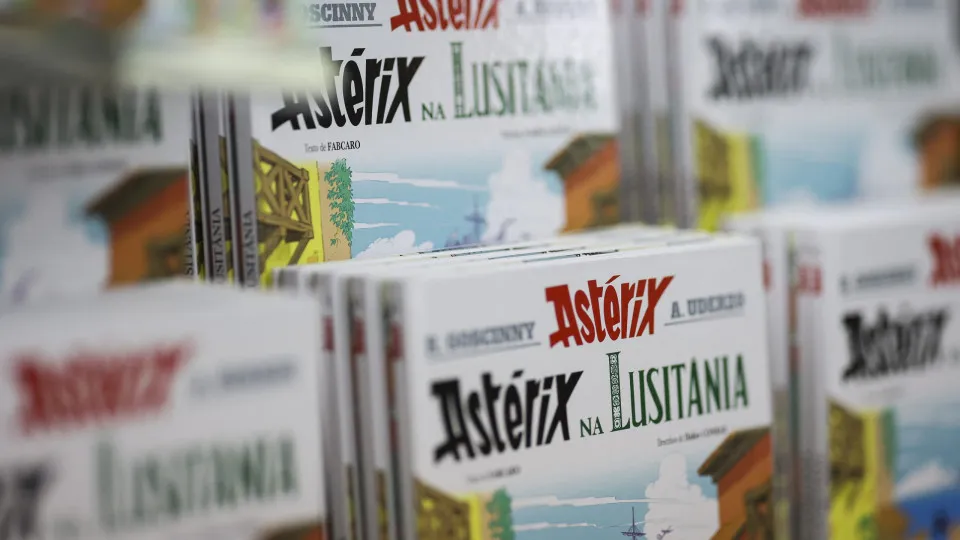
‘Astérix na Lusitânia’ was published a week ago, on October 23, simultaneously in several countries, selling over 30,000 copies in the first four days in the Portuguese market.
Considering these sales—over 30,000 copies sold from a first edition of 80,000 copies—along with pre-orders and stock analysis, a second edition is already in production, and the publisher is preparing a third, totaling 150,000 copies, explained David Azevedo Lopes, the general editions coordinator at Leya.
“It exceeded all our expectations. Just to give an idea, within these four days [from October 23 to 26], more copies of ‘Astérix na Lusitânia’ were sold than the previous album in an entire year,” said Azevedo Lopes.
The ‘Astérix’ book series, created by Albert Uderzo and René Goscinny over 60 years ago, is one of the biggest international literary successes in comic books. However, this 41st volume holds particular interest among Portuguese readers as it references national history and culture.
David Azevedo Lopes noted that in the French market, ‘Astérix na Lusitânia’ sold 120,000 copies in the first week, but the authors were “astonished” by the sales in Portugal.
With a worldwide release of five million copies in 25 countries and 19 languages, ‘Astérix na Lusitânia’ marks the 41st comic book album in this series, which has been continued by Fabcaro (script) and Didier Conrad (artwork).
In an interview with the Lusa agency in Paris, the scriptwriter stated that the book is “a tribute to Lusitanian culture, to saudade.”
“We went to Portugal, watched fado concerts, and it was wonderful. When we create a travel album about a real country, we want the country to appreciate it,” said Fabcaro.
The book also tackles various stereotypes—all Lusitanian characters use the expression “ó pá,” and many have mustaches—and the narrative primarily references Lisbon, fado, codfish, Portuguese pavement, tiles, and wine, maintaining the trademark humor of the characters which the author hopes “contains no errors” and pleases all, especially Portuguese readers.
Despite limited knowledge about Portugal during Roman times, it was through research—including learning “the story of Viriato” and the production of garum (a popular sauce in Ancient Rome, made from fish fermentation and salt)—that the story for the new Asterix and Obelix adventure, steeped in a sentiment of saudade and melancholy associated with Portuguese identity, emerged.
In February 2026, a Mirandese translation will be released under the title ‘Asterix na Lhusitánia,’ joining other volumes of the Gaulish duo’s adventures already translated, such as ‘La Spadanha Branca’ (2024), ‘Asterix an Eitália’ (2017), and ‘Asterix l Goulés’ (2005).




